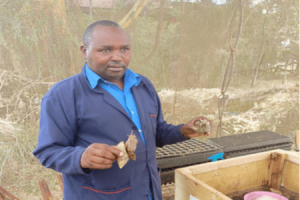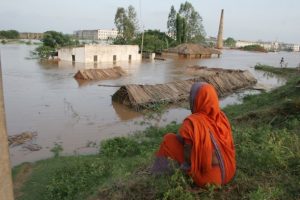Zurich, Switzerland, May 30, 2023 (GLOBE NEWSWIRE) — Hitachi Energy, a global technology leader advancing a sustainable energy future for all, has signed agreements under the supervision and management of the Ministry of Energy with the Saudi Electricity Company (SEC) and with ENOWA. The agreements include the supply of three high–voltage direct current (HVDC) transmission systems to end customer ENOWA, the utility company for NEOM in Northwest Saudi Arabia. Built with sustainability in mind, NEOM is among Saudi Arabia's Giga–Projects1 reshaping the future of development. The three HVDC links will have a total power capacity of up to 9 gigawatts (GW).
The agreements include an order from ENOWA's engineering, procurement and construction management (EPCM) partner, the Saudi Electricity Company (SEC) awarded to Hitachi Energy and its consortium partner, Saudi Services for Electro Mechanical Works (SSEM), to provide one of the world's first 3 GW, 525 kilovolt (kV) HVDC Light transmission system connecting Oxagon, NEOM's regional development, with the larger Yanbu area more than 650 kilometers away in Western Saudi Arabia.
Hitachi Energy's scope of supply includes design, engineering, procurement of HVDC technology and commissioning of the HVDC Light converter stations. Whilst SSEM "" a leading Saudi EPC specialized in power, water and industrial projects "" will design and supply the AC equipment portion and perform the construction and the installation. The converter stations convert the power from AC to DC then back to AC for integration into the receiving grid. The converters will be sourced by and supplied to Saudi Electricity Company, who were contracted in 2022 by ENOWA to act as their EPCM to build this first HVDC system for NEOM.
Further to this, Hitachi Energy and ENOWA have signed an early works and capacity reservation agreement for two additional HVDC projects, each rated up to 3 GW. Under this agreement, both companies commit to having the resources and capacity necessary to implement these two HVDC systems. As part of a new scalable and modular regional network design that is targeted to seamlessly integrate future renewables and energy storage technologies in the NEOM Energy System, making it unique in terms of size and complexity. The co–operation will also explore opportunities to develop local competencies in the Kingdom, including ways to sustainably assemble the necessary HVDC Light components locally.
"We are delighted to strengthen our collaboration with ENOWA and Saudi Electricity Company in order to power one of the most visionary development projects of all time," said Niklas Persson, Managing Director of Hitachi Energy's Grid Integration business. "As the world progresses towards a more sustainable future, our expertise and HVDC technologies are true enablers of the electrification of the global energy system and the transition to renewables."
"By securing the first capacities for such an important part of our future grid in only one year since the decision to use this technology, we show ENOWA's commitment to supporting Saudi Vision 2030 in collaboration with Saudi Electricity Company and Hitachi Energy," said Thorsten Schwarz, Executive Director of Grid Technology & Projects, Energy of ENOWA.
ENOWA, NEOM's energy and water company, produces and delivers clean and sustainable energy for industrial and commercial applications. The company benefits from NEOM's greenfield site and strategic location in the northwestern part of Saudi Arabia, with abundant solar and wind resources. ENOWA will act as a catalyst and incubator for developing new, sustainable energy and water businesses while creating a robust economic sector regionally.
ENOWA seeks by its commitment to renewable energy and efficient water management, to become a global reference for industry leaders and setting a benchmark for sustainable economic circular systems around the world. Formed in 2022, ENOWA is the principal shareholder in the world's largest green hydrogen production plant set to be commissioned in 2026 and will enable NEOM to be a global green hydrogen hub.
NEOM will be powered by 100 percent clean energy, through renewable solar, wind and green hydrogen–based energy. The region is designed to be a blueprint for sustainable urban living with minimal impact on the environment and enhanced livability.
Note to editors:
Hitachi Energy's HVDC solution combines world–leading expertise in HVDC converter valves; the MACH digital control platform2, converter power transformers and high–voltage switchgear; as well as system studies, design and engineering, supply, installation supervision and commissioning.
HVDC Light is a voltage source converter technology developed by Hitachi Energy, which was launched over 25 years ago. It is the preferred technology for many grid applications, including interconnecting countries, integrating renewables and "power–from–shore" connections to offshore production facilities. HVDC Light's defining features include uniquely compact converter stations and exceptionally low electrical losses.
Hitachi Energy pioneered commercial HVDC technology almost 70 years ago and has delivered more than half of the world's HVDC projects.
Hitachi Energy's consulting services assist energy customers in pinpointing their challenges and suggesting customized solutions tailored to their unique requirements. Our consultants operate independently, with a product and system–agnostic approach, possessing in–depth knowledge of global technologies, standards, and local grid codes.
1 Saudi's Giga–Projects
2 Modular Advanced Control for HVDC (MACH)
See also:
Hitachi Energy to supply the first ever large–scale HVDC interconnection in the Middle East and North Africa (2022)
Hitachi Energy and Gulf Cooperation Council Interconnection Authority sign contract to upgrade high–voltage direct current transmission system (2023)
–END–
About Hitachi Energy
Hitachi Energy is a global technology leader that is advancing a sustainable energy future for all. We serve customers in the utility, industry and infrastructure sectors with innovative solutions and services across the value chain. Together with customers and partners, we pioneer technologies and enable the digital transformation required to accelerate the energy transition towards a carbon–neutral future. We are advancing the world's energy system to become more sustainable, flexible and secure whilst balancing social, environmental and economic value. Hitachi Energy has a proven track record and unparalleled installed base in more than 140 countries. Headquartered in Switzerland, we employ around 40,000 people in 90 countries and generate business volumes of over $10 billion USD.
https://www.hitachienergy.com
https://www.linkedin.com/company/hitachienergy
https://twitter.com/HitachiEnergy
About Hitachi, Ltd.
Hitachi drives Social Innovation Business, creating a sustainable society through the use of data and technology. We solve customers' and society's challenges with Lumada solutions leveraging IT, OT (Operational Technology) and products. Hitachi operates under the business structure of "Digital Systems & Services" – supporting our customers' digital transformation; "Green Energy & Mobility" – contributing to a decarbonized society through energy and railway systems, and "Connective Industries" – connecting products through digital technology to provide solutions in various industries. Driven by Digital, Green, and Innovation, we aim for growth through co–creation with our customers. The company's consolidated revenues for fiscal year 2022 (ended March 31, 2023) totaled 10,881.1 billion yen, with 696 consolidated subsidiaries and approximately 320,000 employees worldwide. For more information on Hitachi, please visit the company's website at https://www.hitachi.com.
Attachment

GLOBENEWSWIRE (Distribution ID 8848737)

 As per the information provided on its website, it has already raised $50 million USD from more than 15 governments, philanthropies, and corporate entities but the ambition is much bigger.
As per the information provided on its website, it has already raised $50 million USD from more than 15 governments, philanthropies, and corporate entities but the ambition is much bigger.






